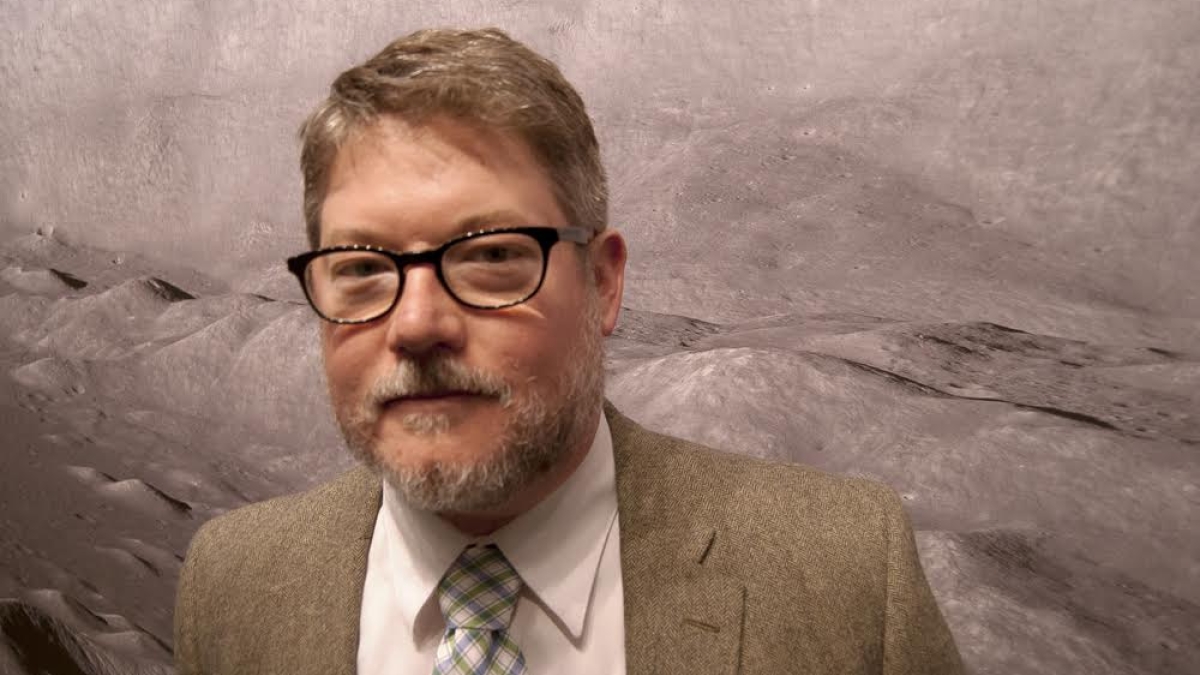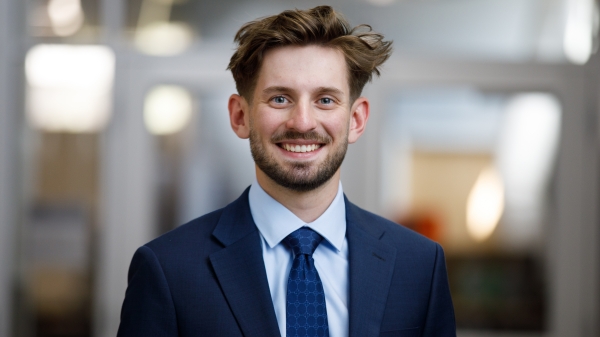ASU alumnus lands gig at the Smithsonian

ASU alumnus Matt Shindell left Harvard in 2015 to work as a curator at the Smithsonian Institute's National Air and Space Museum.
Arizona State University alumnus Matt Shindell found a way to bring all his interests together in a career many would rank high on their list of dream jobs: curating a collection at the Smithsonian Institution.
“It was being in the right place at the right time,” Shindell said. “And studying the right thing — it was luck.”
Finding the job posting may have been luck, but Shindell’s qualifications for the job were a result of hard work and many years of education. In 1994, he started his undergraduate degree in biology and society at ASU and was an honors student in Barrett, the Honors College.
During his undergraduate years, he discovered the history of science as a distinct field of study, mostly due to his courses and the teacher-mentors in his program.
Specifically, he gave credit to Regents’ Professor Jane Maienschein, the current director of the Center for Biology and Society in the College of Liberal Arts and Sciences. He said — aside from Maienschein’s teaching and mentorship — he was immensely grateful for the academic opportunities outside the classroom she provided him and other students: trips, academic conferences and even co-authoring an article in Science Magazine.
“Jane really opened up that world for me. It was something I got at ASU that I might not have gotten anywhere else because Jane is such a dynamic teacher and also a great mentor,” he said. “That program taught me a lot about how you can approach science from other angles, outside of practicing science.”
Around the same time, Shindell developed a strong interest in creative writing and began taking courses at ASU. He said the biggest faculty influence on his interest in creative writing was world-renowned poet and Regents’ Professor Norman Dubie, with whom he took classes and learned the art of the craft. Dubie’s classes inspired Shindell to apply to the creative writing graduate program at University of Iowa.
Shindell decided he would pursue both poetry and science academically, first by completing a Master of Fine Arts in creative writing and then returning to ASU for a Master of Science in biology and society from the School of Life Sciences in the College of Liberal Arts and Sciences.
Having gone far in both realms, Shindell decided to pursue a doctorate degree in the history of science from the University of California, San Diego. He noted the value of having pursued both routes from his undergraduate years onward. He said creative writing and biology prepared him to be an able communicator. This skill proved to be of the utmost value in his academic and professional work.
Shindell completed postdoc work at UCSD, University of Southern California and Harvard University. While at Harvard in 2015, he became aware of the position at the Smithsonian, for which his skill set was a nearly perfect fit. Shindell always expected himself to go into academia as a professor; working in a museum — especially at the Smithsonian — had not crossed his mind before. However, the position seemed to be a great match, and he felt compelled to jump on the opportunity.
After finding and applying to the position, Shindell received a job offer. Now, Shindell’s official title is Curator of the Planetary Sciences Collection at the Smithsonian Institution’s National Air and Space Museum. As one might expect, the position comes with several major responsibilities.
“Everything in the museum that’s related to planetary science and solar system exploration is the stuff I’m now responsible for,” he said. “So, all the rovers and the space crafts that we have on display — pretty much everything except for stuff related to human space flight is in my collection now.”
Beyond maintaining the collection, Shindell wears many hats on the job — from research and writing to public outreach, exhibition design and beyond. And that’s part of why he loves it.
Speaking on the value of his education from ASU in the biology and society program, Shindell gave credit to the mentorship and extra-curricular academic pursuits of his undergraduate years. He said these were what sparked the passion in him to continue down the path of education toward a doctorate, a move that got him where he is today.
“ASU absolutely laid the groundwork for what I do now,” said Shindell.
More Science and technology

Cracking the code of online computer science clubs
Experts believe that involvement in college clubs and organizations increases student retention and helps learners build valuable…
Consortium for Science, Policy & Outcomes celebrates 25 years
For Arizona State University's Consortium for Science, Policy & Outcomes (CSPO), recognizing the past is just as important as…

Hacking satellites to fix our oceans and shoot for the stars
By Preesha KumarFrom memory foam mattresses to the camera and GPS navigation on our phones, technology that was developed for…